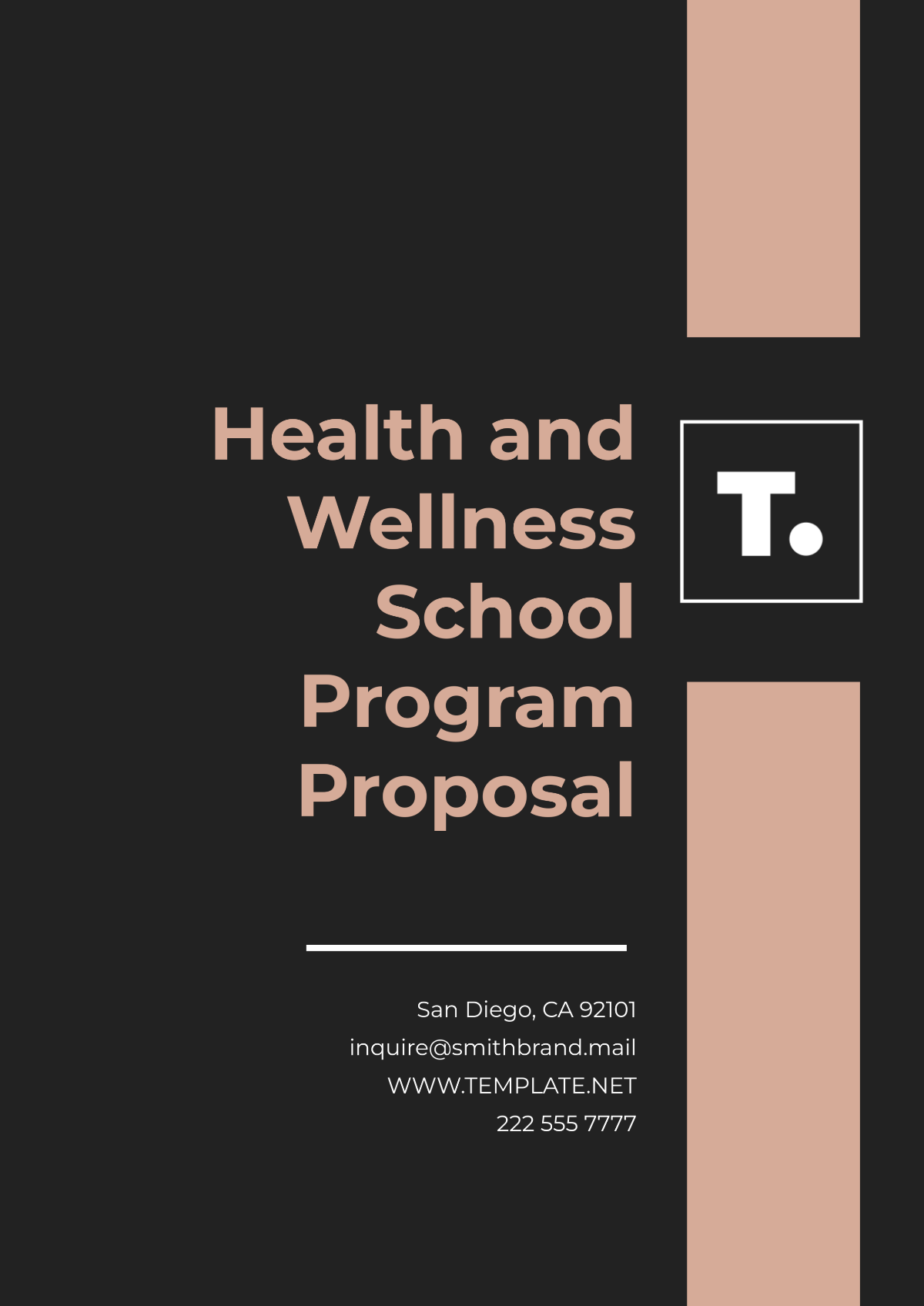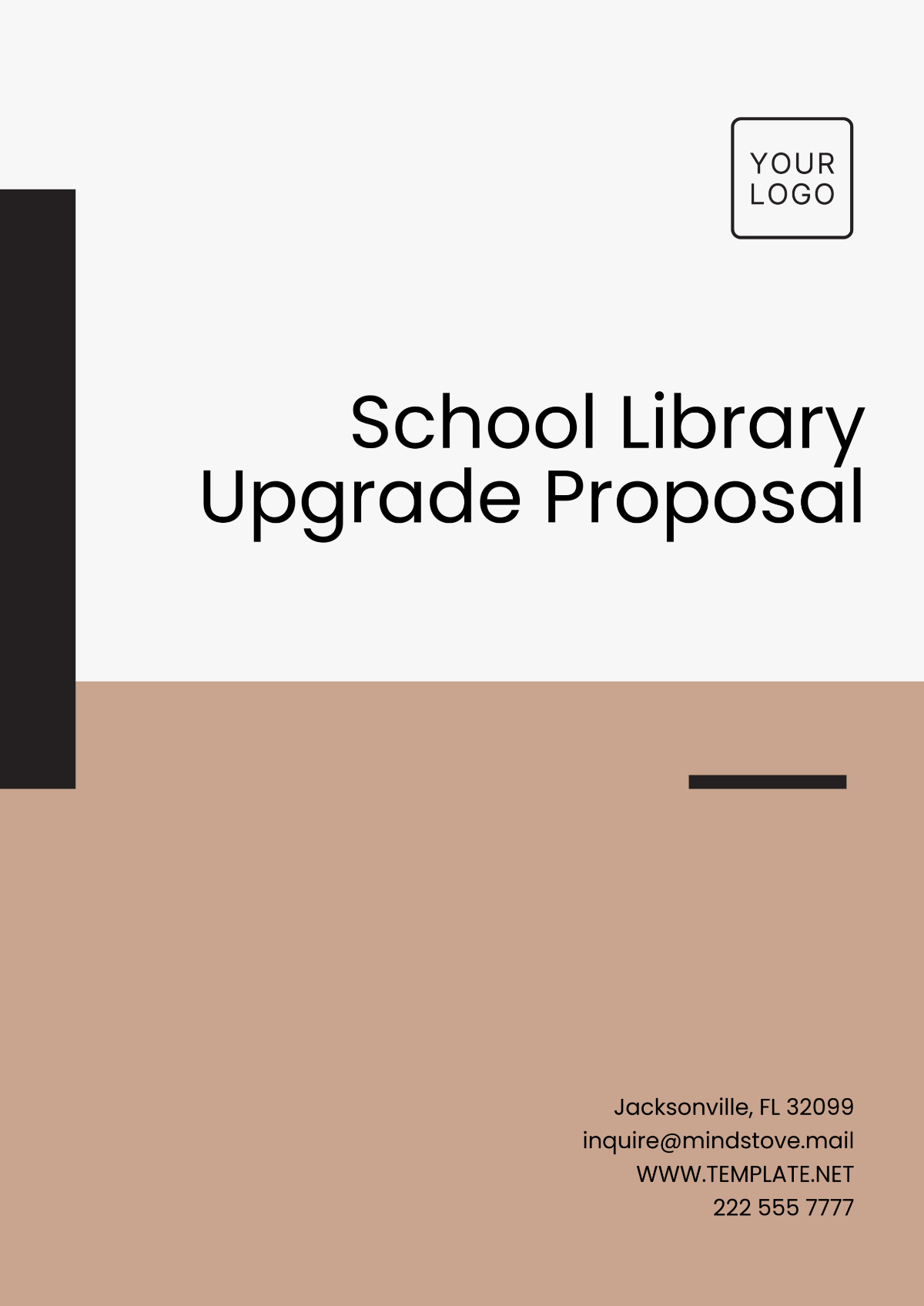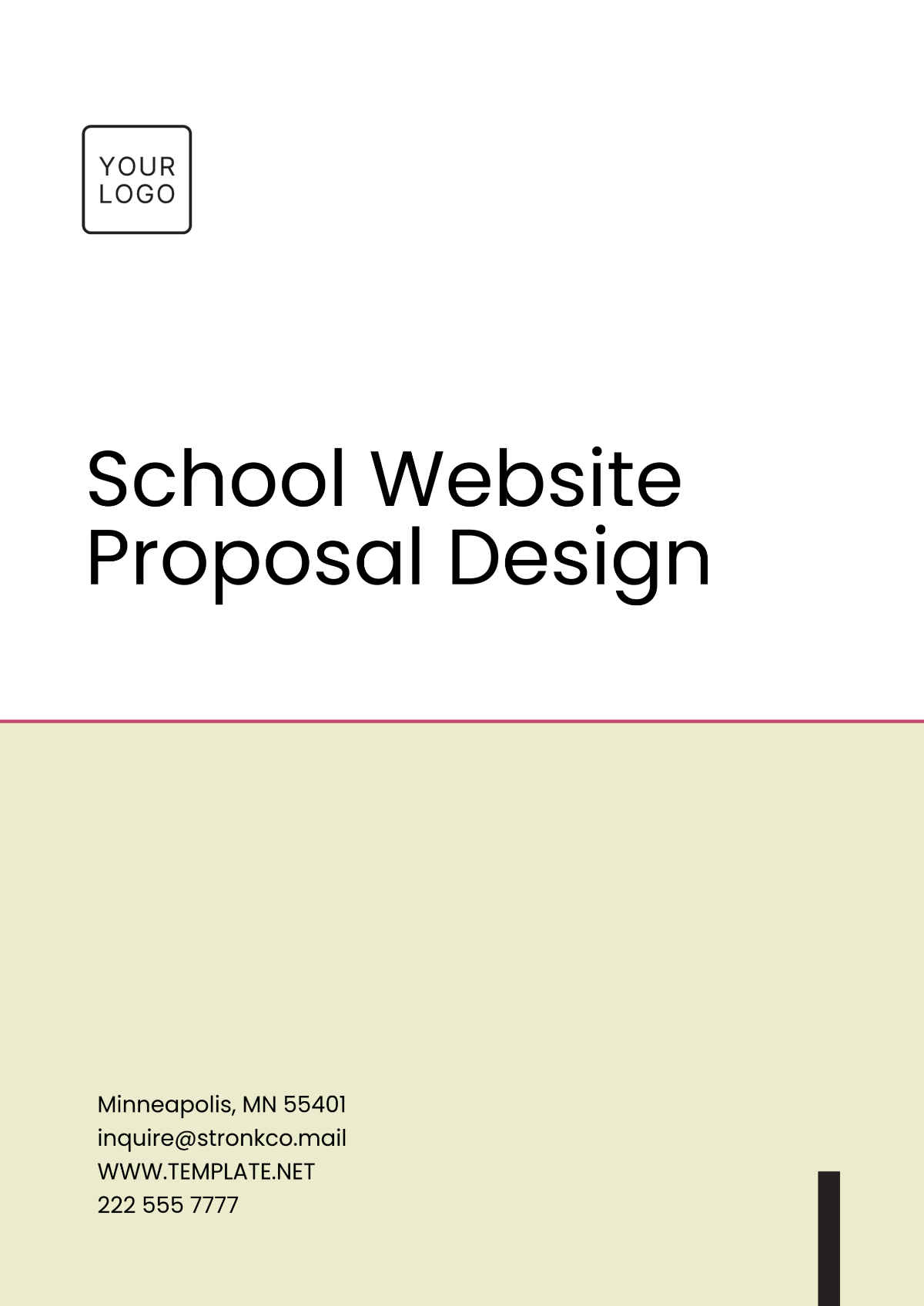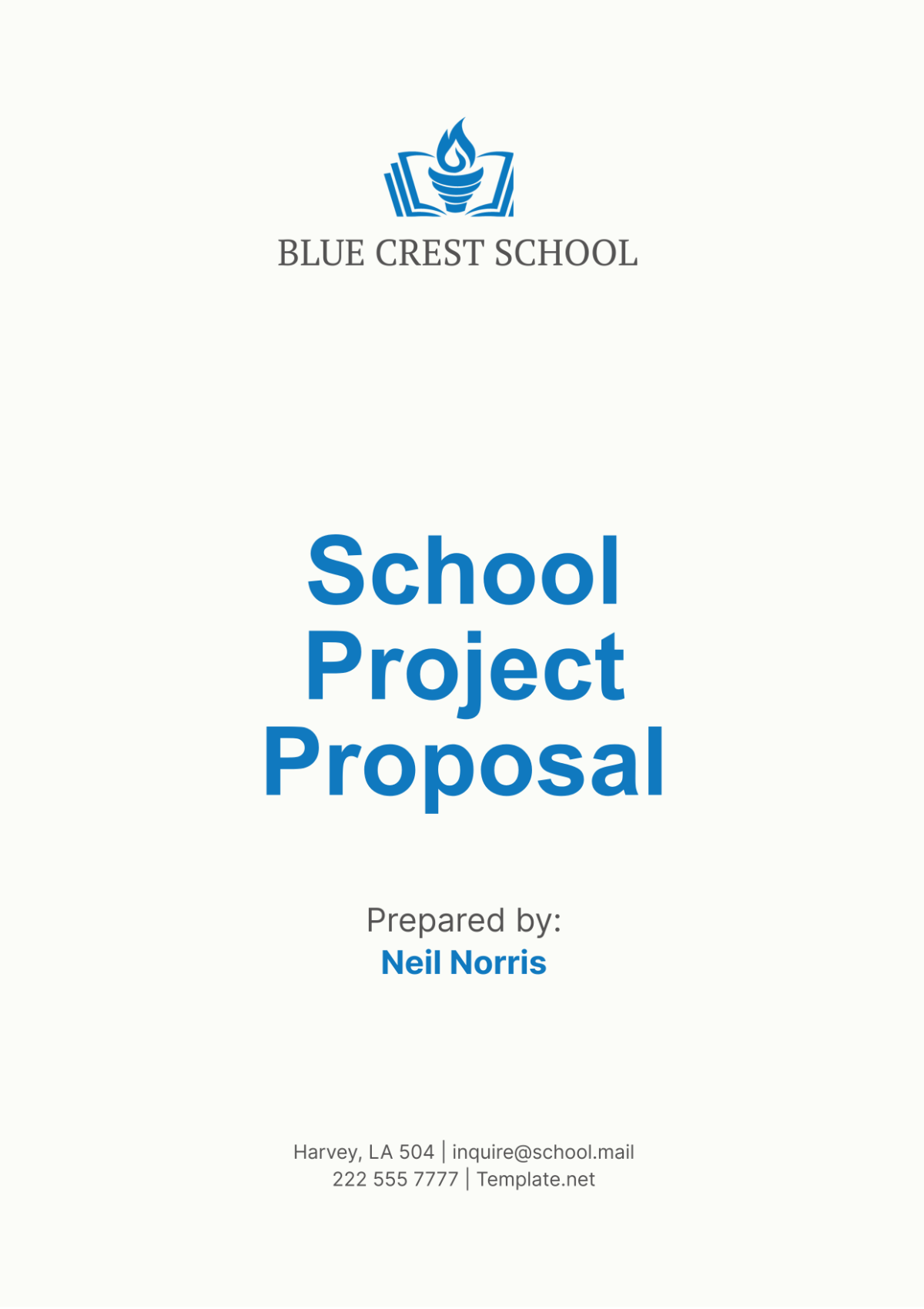School Development Proposal
I. Executive Summary
This School Development Proposal outlines a comprehensive plan to enhance the educational environment, academic performance, and overall experience for students at [Your Company Name]. The proposal includes strategic initiatives to improve facilities, expand academic programs, integrate technology, and strengthen community ties. By implementing these initiatives, we aim to create a dynamic and supportive learning environment that prepares students for future success.
II. Introduction
A. Purpose of the Proposal
The primary purpose of this proposal is to secure approval and funding for a series of development projects that will address current challenges and opportunities within our school. These projects are designed to enhance the quality of education, provide modern facilities, and foster a strong sense of community among students, staff, and stakeholders.
B. Background Information
[Your Company Name] has a long-standing tradition of academic excellence and community engagement. Over the years, we have continuously sought to improve our educational offerings and facilities. However, with the rapid advancements in technology and changing educational needs, it is imperative that we undertake significant development initiatives to maintain and enhance our standards.
III. Objectives
The objectives outlined in this proposal are designed to enhance the educational environment, elevate academic standards, and foster community engagement at [Your Company Name]. These goals are aligned with our commitment to providing a comprehensive and modern education that prepares students for future success. The following sections detail our specific objectives across four key areas: improving educational facilities, enhancing academic programs, integrating technology, and strengthening community engagement.
A. Improve Educational Facilities
Upgrade Classrooms
Modernizing classrooms with advanced technology and flexible furniture is essential to support various teaching methods and learning styles. Our aim is to create dynamic learning environments that are adaptable and conducive to both traditional and innovative instructional approaches.
Technology Integration: Install interactive whiteboards, projectors, and audio-visual systems to facilitate multimedia presentations and interactive lessons.
Flexible Furniture: Introduce modular desks and chairs that can be easily reconfigured to support group work, individual study, or lecture formats.
Enhanced Lighting: Upgrade lighting systems to include adjustable LED lighting that reduces glare and improves visibility, creating a more comfortable learning environment.
Build New Science and Technology Laboratories
Providing state-of-the-art facilities for STEM education is crucial for fostering innovation and hands-on learning experiences. The new laboratories will be equipped with the latest technology and resources to support advanced scientific inquiry and experimentation.
Laboratory Equipment: Equip labs with cutting-edge tools and instruments, such as 3D printers, robotics kits, and advanced microscopes.
Safety Features: Implement modern safety protocols and equipment, including fume hoods, eye wash stations, and emergency shut-off systems.
Collaborative Spaces: Design labs with areas for group work and project collaboration, encouraging teamwork and interdisciplinary learning.
Expand the Library
Creating a modern, resource-rich library environment with both digital and print resources is vital for supporting research and learning. The expanded library will serve as a central hub for academic inquiry and collaboration.
Digital Resources: Invest in e-books, online databases, and digital subscriptions to provide students with access to a wide range of information and research materials.
Study Spaces: Develop quiet study areas, group study rooms, and collaborative workspaces to accommodate different study preferences and needs.
Technology Integration: Include computer workstations, charging stations, and digital media labs to support students' technological needs.
B. Enhance Academic Programs
Introduce New Elective Courses
Expanding the curriculum with courses in emerging fields such as artificial intelligence, environmental science, and digital arts will prepare students for the evolving demands of the workforce and higher education.
Artificial Intelligence: Offer courses that cover the basics of AI, machine learning, and data science, providing students with foundational knowledge in these cutting-edge fields.
Environmental Science: Develop programs focused on sustainability, conservation, and climate change to raise awareness and inspire action on environmental issues.
Digital Arts: Introduce classes in digital photography, graphic design, and multimedia production to nurture creativity and technical skills.
Strengthen Special Education Programs
Increasing resources and support for students with special needs is essential to ensuring inclusive education for all. By expanding our special education programs, we can better accommodate diverse learning needs and promote equity.
Additional Staffing: Hire more special education teachers and aides to provide personalized instruction and support.
Resource Development: Create specialized learning materials and tools tailored to the needs of students with disabilities.
Professional Development: Offer ongoing training for all staff on inclusive teaching practices and strategies.
Implement Advanced Placement (AP) Programs
Offering more AP courses will prepare students for college-level work and improve their college admission prospects. These rigorous courses challenge students and provide them with the opportunity to earn college credit while still in high school.
Course Expansion: Introduce AP courses in subjects such as computer science, economics, and environmental science.
Student Support: Provide resources and tutoring to help students succeed in AP coursework.
Teacher Training: Ensure teachers are well-prepared to deliver AP curriculum through specialized training and professional development.
C. Integrate Technology
Implement Smart Classrooms
Equipping classrooms with interactive whiteboards, tablets, and other digital tools will enhance teaching and learning by making lessons more engaging and interactive.
Interactive Whiteboards: Install whiteboards that allow for real-time collaboration and interaction during lessons.
Tablets and Laptops: Provide students with access to tablets or laptops for in-class activities and assignments.
Digital Tools: Utilize educational software and apps to support learning and track student progress.
Develop a Learning Management System (LMS)
Creating an online platform for managing coursework, assignments, and communication between teachers, students, and parents will streamline educational processes and improve efficiency.
Course Management: Allow teachers to post assignments, grades, and resources online.
Communication Tools: Facilitate communication through messaging, announcements, and discussion boards.
Progress Tracking: Enable students and parents to monitor academic progress and performance.
Introduce Virtual Reality (VR) Learning
Using VR technology to provide immersive learning experiences in subjects such as history, science, and geography will make learning more engaging and effective.
Immersive Experiences: Create virtual field trips and simulations to enhance understanding of complex concepts.
Interactive Learning: Develop interactive VR lessons that allow students to explore and manipulate virtual environments.
Skill Development: Use VR to teach practical skills in a safe and controlled setting.
D. Strengthen Community Engagement
Establish Partnerships with Local Businesses
Collaborating with local businesses to provide students with internship opportunities and real-world experience will bridge the gap between education and the workplace.
Internship Programs: Develop internship opportunities in various industries to give students hands-on experience and career insights.
Mentorship: Partner with local professionals to provide mentorship and guidance to students.
Collaborative Projects: Engage businesses in school projects and events to foster community involvement.
Enhance Parent-Teacher Communication
Using digital tools and regular meetings to foster strong relationships between parents and teachers will create a supportive and collaborative educational environment.
Digital Platforms: Implement platforms for parents to access their child's academic progress, attendance, and school announcements.
Regular Meetings: Schedule regular parent-teacher conferences to discuss student progress and address any concerns.
Workshops: Offer workshops for parents on how to support their child's education and development at home.
Promote Community Service Projects
Encouraging students to participate in community service activities will foster a sense of social responsibility and community involvement.
Service Learning: Integrate community service projects into the curriculum to provide students with practical experience and civic education.
Volunteer Opportunities: Partner with local organizations to offer volunteer opportunities for students.
Recognition: Acknowledge and celebrate students' contributions to community service through awards and recognition programs.
IV. Project Scope
The project scope defines the boundaries and deliverables of the development initiatives proposed for [Your Company Name]. It ensures that all stakeholders have a clear understanding of what the projects will entail, who will be involved, and how they will be implemented. This section outlines the target audience, key activities, and the timeline for the development projects.
A. Target Audience
The development projects will benefit the entire school community, including students, teachers, staff, parents, and local stakeholders. Specific initiatives will target:
Students: Enhancing their learning experience and preparing them for future academic and career success.
Teachers: Providing them with modern tools and resources to improve teaching effectiveness.
Parents: Strengthening their engagement and communication with the school.
Community: Building stronger ties and creating opportunities for collaboration and mutual support.
B. Project Activities
1. Facility Upgrades
Classroom Renovations: Modernize classrooms with new furniture, interactive whiteboards, and improved lighting.
New Laboratories: Construct and equip science and technology labs with state-of-the-art equipment.
Library Expansion: Expand the library to include more study spaces, digital resources, and collaborative areas.
2. Academic Program Enhancements
Elective Courses: Develop and introduce new elective courses in emerging fields.
Special Education Resources: Increase staffing and resources for special education programs.
AP Programs: Expand the number of AP courses offered and provide support for students enrolled in these programs.
3. Technology Integration
Smart Classrooms: Equip classrooms with digital tools such as tablets, laptops, and interactive whiteboards.
LMS Development: Create and implement a Learning Management System to streamline coursework management and communication.
VR Learning: Integrate VR technology into the curriculum to provide immersive learning experiences.
4. Community Engagement Initiatives
Local Business Partnerships: Establish partnerships with local businesses for internships and real-world learning opportunities.
Parent-Teacher Communication: Implement digital tools and regular meetings to enhance communication.
Community Service Projects: Organize and promote community service activities for students.
C. Timeline
The development projects will be executed over a three-year period, with key milestones as follows:
Year 1: Planning and initial implementation of facility upgrades, introduction of new elective courses, and establishment of local business partnerships.
Year 2: Completion of classroom renovations, construction of new laboratories, expansion of AP programs, and development of the LMS.
Year 3: Full implementation of smart classrooms, library expansion, introduction of VR learning, and continued community engagement initiatives.
By adhering to this comprehensive timeline, [Your Company Name] will ensure that each project phase is completed efficiently and effectively, resulting in a significant enhancement of our educational offerings and overall school environment.
V. Financial Plan
A. Budget Overview
The estimated total cost for the development projects is $5,000,000. The budget will be allocated as follows:
Category | Amount |
|---|---|
Classroom Renovations | $1,200,000 |
New Science and Technology Labs | $1,000,000 |
Library Expansion | $800,000 |
Technology Integration | $1,200,000 |
Academic Program Enhancements | $500,000 |
Community Engagement Initiatives | $300,000 |
B. Funding Sources
The funding for the development projects will be sourced from:
Source | Amount |
|---|---|
School Reserves | $1,000,000 |
Government Grants | $2,000,000 |
Donations and Fundraising | $1,500,000 |
Corporate Sponsorships | $500,000 |
C. Financial Projections
The financial projections indicate that the investments in the development projects will lead to increased enrollment, improved academic performance, and enhanced community support, resulting in higher revenues and financial stability for the school. The anticipated financial benefits include:
Increased Enrollment: Projected 10% annual increase in student enrollment.
Enhanced Reputation: Improved academic performance and facilities will enhance the school's reputation, attracting more students and donors.
Community Support: Stronger community ties will lead to increased donations and sponsorships.
VI. Risk Management
A. Potential Risks
The following risks have been identified for the development projects:
Funding Shortfalls: Insufficient funding to complete the projects as planned.
Delays in Implementation: Potential delays in construction and implementation of new programs.
Technological Challenges: Issues with integrating new technologies into the curriculum.
Community Resistance: Resistance from stakeholders to changes and new initiatives.
B. Mitigation Strategies
To address the identified risks, the following mitigation strategies will be implemented:
Funding Contingency Plans: Establish contingency plans and identify alternative funding sources to cover potential shortfalls.
Project Management: Use experienced project managers to oversee the implementation and ensure timely completion.
Technology Training: Provide comprehensive training for teachers and staff on new technologies to ensure smooth integration.
Stakeholder Engagement: Engage stakeholders through regular communication and involvement in the planning and implementation process.
VII. Evaluation
A. Evaluation Metrics
The success of the development projects will be evaluated using the following metrics:
Academic Performance: Improvement in standardized test scores and overall academic performance.
Enrollment Rates: Increase in student enrollment numbers.
Facility Usage: Utilization rates of new and upgraded facilities.
Community Feedback: Satisfaction levels of students, parents, teachers, and community members.
B. Evaluation Process
The evaluation process will include:
Regular Assessments: Conducting regular assessments to track progress and identify areas for improvement.
Feedback Surveys: Distributing surveys to gather feedback from students, parents, teachers, and community members.
Performance Reviews: Holding performance reviews with project managers and stakeholders to discuss progress and address any issues.
C. Reporting
Evaluation results will be compiled into regular reports and shared with stakeholders to provide transparency and accountability. These reports will include:
Progress Updates: Detailed updates on the progress of each development project.
Performance Metrics: Data on key performance metrics and analysis of results.
Recommendations: Recommendations for any necessary adjustments or improvements.
VIII. Conclusion
The proposed development projects represent a significant investment in the future of [Your Company Name]. By enhancing our facilities, expanding academic programs, integrating technology, and strengthening community ties, we will create a dynamic and supportive learning environment that prepares our students for future success. We seek the approval and support of stakeholders and potential sponsors to make this vision a reality.
IX. Appendices
A. Detailed Budget Breakdown
Category | Amount |
|---|---|
Classroom Renovations | $1,200,000 |
- Furniture | $500,000 |
- Interactive Whiteboards | $400,000 |
- Lighting | $300,000 |
New Science and Technology Labs | $1,000,000 |
- Construction | $600,000 |
- Equipment | $400,000 |
Library Expansion | $800,000 |
- Construction | $500,000 |
- Digital Resources | $300,000 |
Technology Integration | $1,200,000 |
- Smart Classrooms | $700,000 |
- Learning Management System | $300,000 |
- Virtual Reality Learning | $200,000 |
Academic Program Enhancements | $500,000 |
- New Courses Development | $300,000 |
- Special Education Resources | $200,000 |
Community Engagement Initiatives | $300,000 |
- Business Partnerships | $150,000 |
- Parent-Teacher Communication | $100,000 |
- Community Service Projects | $50,000 |
B. Project Timeline
Year | Milestones |
|---|---|
Year 1 | Planning, initial implementation of facility upgrades, elective courses, partnerships |
Year 2 | Completion of classroom renovations, construction of new labs, expansion of AP programs, LMS development |
Year 3 | Full implementation of smart classrooms, library expansion, VR learning, community engagement initiatives |
C. Stakeholder Engagement Plan
Stakeholder | Engagement Method | Frequency |
|---|---|---|
Students | Surveys, focus groups, student council | Quarterly |
Teachers | Workshops, training sessions, meetings | Monthly |
Parents | Newsletters, parent-teacher meetings | Bi-monthly |
Community Members | Public forums, newsletters, social media | Quarterly |
D. Risk Management Plan
Risk | Mitigation Strategy |
|---|---|
Funding Shortfalls | Contingency plans, alternative funding sources |
Delays in Implementation | Experienced project managers, detailed project plans |
Technological Challenges | Comprehensive training, technical support |
Community Resistance | Regular communication, stakeholder involvement |
E. Evaluation Plan
Metric | Description | Frequency |
|---|---|---|
Academic Performance | Improvement in test scores and overall performance | Annually |
Enrollment Rates | Increase in student enrollment | Annually |
Facility Usage | Utilization rates of new/upgraded facilities | Bi-annually |
Community Feedback | Satisfaction levels from surveys | Bi-annually |









































